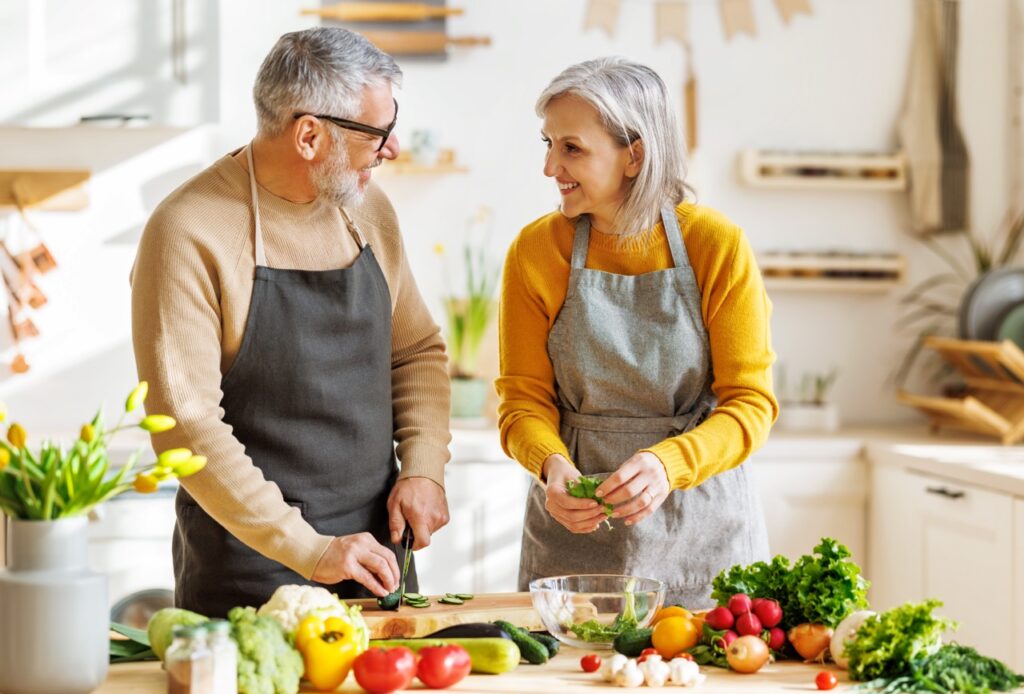As we delve into the wonders of sustainable cooking, it’s important to remember that cooking for two doesn’t mean you have to create double the waste. In fact, with the right approach, cooking can become a sustainable, eco-friendly activity that contributes positively to our environment. So, get ready to explore the world of sustainable cooking and learn some delicious recipes that will make your kitchen greener and your meals tastier.
The Basics of Sustainable Cooking
Sustainable cooking is all about reducing your carbon footprint, minimizing waste, and using ethically sourced ingredients. It involves understanding where your food comes from and how it impacts the environment. It means choosing local, organic, and seasonal produce over imported and chemically treated ones. It’s also about reducing energy consumption in the kitchen and minimizing waste.
Energy-Efficient Cooking Methods
- Slow Cooking: Slow cookers use less energy than conventional ovens. Plus, they require less supervision, meaning you can set it and forget it. Try a hearty vegetable stew or a lentil soup in your slow cooker.
- Steaming: This method retains the nutrients in your food better than boiling or frying. It’s perfect for cooking fish, vegetables, and dumplings.
- Batch Cooking: Cooking large amounts of food at once saves energy and time. The leftovers can be frozen and reheated later, reducing the need for cooking multiple times.
Reducing Food Waste
- Plan Your Meals: Make a weekly menu plan and shop accordingly. This reduces the chance of food going to waste.
- Use Leftovers Creatively: Leftovers can be repurposed into new meals. For example, last night’s roasted vegetables can become today’s veggie wrap.
- Compost Your Scraps: Kitchen scraps like vegetable peels, coffee grounds, and eggshells can be composted. This creates rich soil for your plants and reduces waste that goes to the landfill.
Choosing Sustainable Ingredients
- Buy Local and Seasonal: Locally grown, seasonal foods are fresher, tastier, and have a smaller carbon footprint.
- Choose Organic: Organic farming practices are better for the environment as they avoid harmful pesticides and promote biodiversity.
- Mindful Meat Consumption: While the meat industry, particularly factory farming, contributes significantly to greenhouse gas emissions, not all meats have the same impact. Grass-fed beef, for instance, can be a more sustainable choice for those who enjoy meat. These animals are raised in a more natural environment and their farming practices can have less of an environmental impact. However, it’s still beneficial for our planet to balance our diets with a variety of plant-based meals.
Eco-Friendly Recipes to Try
- Quinoa Salad with Seasonal Vegetables: This protein-packed salad uses quinoa, a sustainable grain, and whatever vegetables are in season.
- Vegetable Stir-Fry with Tofu: This simple, quick recipe lets you use up any veggies you have on hand, and tofu is a great low-impact protein source.
- Lentil Soup: This hearty, warming soup is perfect for a slow cooker. Lentils are an excellent source of protein and are very environmentally friendly.
Remember, sustainable cooking isn’t just about what you cook, but also how you cook. By making these small changes, you can contribute to a healthier planet while enjoying delicious, nutritious meals with your loved one. So put on your aprons and get ready to cook up a storm in your eco-friendly kitchen!
